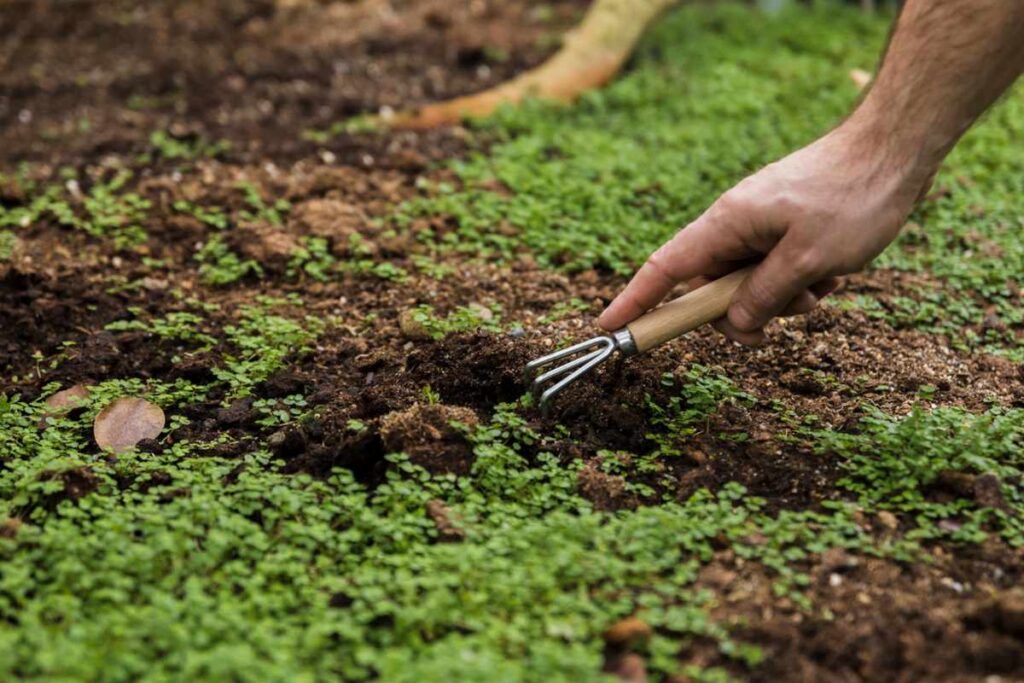Green manure in agriculture involves growing certain plants, such as legumes, grasses, or clover, specifically to be plowed back into the soil while still green. These crops are rich in nutrients, particularly nitrogen, which helps enhance soil structure, water retention, and microbial activity. Green manure is an environmentally friendly alternative to chemical fertilizers, as it naturally increases nutrient availability and prevents soil erosion, promoting sustainable farming practices and improving crop yields over time.
Green manure is a highly beneficial practice in agriculture, offering both economic and ecological advantages, making it an essential tool for modern agriculture. While green manure offers numerous benefits for soil health and sustainable farming, it also has several disadvantages that farmers must consider. In this article, we will discuss in detail the advantages and disadvantages of green manure in agriculture.
Table of Contents
Advantages of Green Manure in Agriculture

1. Soil Fertility and Nutrient Enrichment
Green manure crops, particularly legumes like clover and alfalfa, have the ability to fix atmospheric nitrogen through a symbiotic relationship with Rhizobium bacteria in their root nodules. When these crops are turned into the soil, they decompose, releasing nitrogen and other nutrients like potassium and phosphorus, making them available for the subsequent crops. This naturally improves soil fertility, reducing the reliance on synthetic fertilizers.
2. Improved Soil Structure
As green manure plants grow, their roots penetrate and break up compacted soil layers, creating a more porous structure. This improves soil aeration, which promotes healthy root growth for subsequent crops. The decomposed plant matter also increases the organic matter content, making the soil crumbly and easy to work with, which is vital for better water infiltration and root development.
3. Increased Water Retention
The organic matter from green manure helps improve the soil’s ability to retain water. Soils rich in organic material have a sponge-like quality, absorbing and holding water, which is essential in drought-prone regions. This enhanced water retention reduces the need for frequent irrigation, conserving water resources.
4. Suppression of Weeds
Green manure crops grow densely, covering the soil and outcompeting weeds for sunlight, nutrients, and water. This natural weed suppression reduces the need for herbicides and manual weeding, saving labor and minimizing chemical use in farming systems.
5. Soil Erosion Control
By covering the soil with vegetation, green manure protects it from wind and water erosion. The root systems of green manure crops bind the soil, preventing it from being washed or blown away. This is especially important in areas prone to erosion due to heavy rainfall or wind.
6. Increased Microbial Activity
Decomposing green manure increases the organic matter in the soil, which serves as food for beneficial microorganisms like bacteria, fungi, and earthworms. These microorganisms break down organic matter and release nutrients, improving soil health and creating a thriving ecosystem. Enhanced microbial activity contributes to better nutrient cycling and long-term soil fertility.
7. Cost Savings
By using green manure, farmers can reduce their reliance on synthetic fertilizers, herbicides, and pesticides, leading to significant cost savings. Additionally, it decreases the need for irrigation due to improved water retention, further lowering farming costs. Over time, the use of green manure contributes to the long-term sustainability of the farm, reducing the need for external inputs.
8. Sustainable and Environmentally Friendly
Green manure promotes sustainable farming by reducing chemical inputs, enhancing biodiversity, and improving soil health naturally. It aligns with organic farming principles, as it improves soil without the need for synthetic fertilizers or pesticides. This reduces the environmental impact of agriculture, leading to healthier ecosystems and more resilient farming systems.
Disadvantages of Green Manure in Agriculture

1. Time and Labor-Intensive
Growing green manure requires time and effort, often taking up land that could be used for cash crops. Since green manure crops need to be grown, maintained, and eventually incorporated back into the soil, this adds extra steps to farming operations, increasing labor requirements.
2. Land Usage
One of the major downsides of green manure is that it occupies land during the growing period, potentially reducing the space available for growing commercial crops. This could be particularly problematic for small-scale farmers who have limited land and need to maximize output. The period during which green manure is grown and incorporated might lead to a temporary reduction in income if the farmer sacrifices a cash crop cycle.
3. Delayed Benefits
The benefits of green manure are not immediate. It takes time for the green material to decompose and release its nutrients into the soil. This means that farmers may not see a quick improvement in soil fertility and might need to wait for one or more growing seasons before reaping the full advantages.
4. Pest and Weed Issues
Green manure crops can sometimes attract pests or harbor diseases that could affect subsequent crops. Additionally, some green manure crops, especially fast-growing species, can behave like weeds if not properly managed. These plants could compete with future crops for nutrients, water, and light if they are not completely incorporated into the soil.
5. Weather Dependency
The effectiveness of green manure is highly dependent on weather conditions. Excessive rain can hinder the incorporation of green manure into the soil, and drought conditions may limit its growth and nutrient contribution. Climate-related challenges can affect the growth and timing of green manure, making it less effective or harder to manage.
6. Uncertain Nutrient Release
The breakdown of green manure and the subsequent release of nutrients into the soil can be unpredictable. Factors like soil temperature, moisture, and microbial activity influence how fast the green manure decomposes, making it hard for farmers to predict exactly when nutrients will be available for the next crop.
Conclusion
In conclusion, green manure offers significant advantages in agriculture, particularly in enhancing soil fertility, improving structure, and promoting sustainable farming practices by reducing the need for chemical fertilizers. It helps in nitrogen fixation, preventing soil erosion, and increasing biodiversity. However, green manure also presents several challenges, such as being time and labor-intensive, occupying valuable land during the growing season, and delivering delayed benefits. Additionally, issues like nitrogen locking, pest attraction, and dependence on weather conditions make it less suitable for all farming systems. While green manure remains a valuable tool for long-term soil health, its success depends on careful planning and management to balance its benefits against the potential drawbacks.







